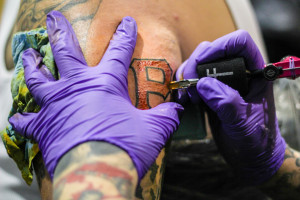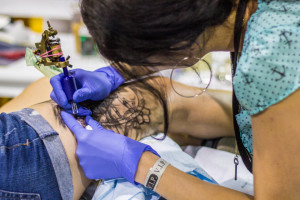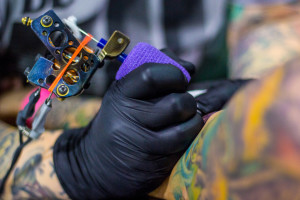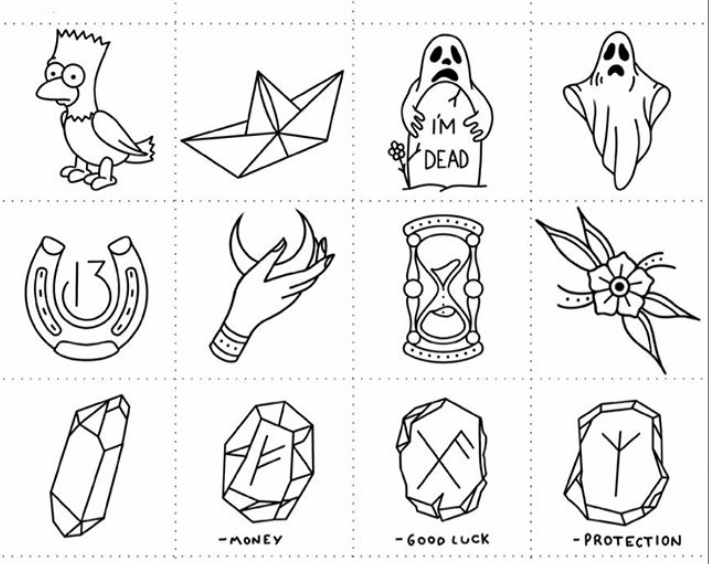
By: Saul Berrios-Thomas | Layout Editor
When attendees walked into the large, bright room the thing that could be immediately heard, even over the talking and music, was the hum of hundreds of tattoo machines creating pieces of art on all different kinds of canvases.
With hundreds of tattoo artists at the Steel City Tattoo Convention at the David L. Lawrence Convention Center, attendees scoured through thousands of drawing and photos to find the artist perfect for them.
Some artists were booked throughout the weekend, but most could find time for walk-ups. There were competitions for best tattoos and seminars hosted by some of the best artists in the world.
The convention, presented by Shane O’Neill Productions, was a confluence of hard work, according to Shane O’Neill.
“It was about two years of planning and heavy advertising. We had over 40 billboards, 130 radio ads, 100 plus tv ads and social media,” he said. “It’s the upper echelon of the tattoo industry.”
The diversity of the tattoo artists was overwhelming. Only 15 percent of the artists were local according to O’Neill. There were tattoo artists from all over the world.
The featured artist, Stephane Chaudesaigues, came from Paris and spoke to The Duke through his wife Cecil’s translation.
“The first time he came to the US for a tattoo convention was in 1992. It is always an incredible experience because he sees American tattoo collectors and he loves it,” Cecil translated. “Conventions are always enjoyable for him, but especially when he knows he is meeting friends. When he has a good convention that makes sure the artists have light to tattoo and comfortable arrangements it is easy.”

One thing that was immediately apparent at the convention is how widespread tattoos have become. The diversity of the people attending is proof in and of itself, but when talking to the artist it becomes immediately apparent how big of an industry tattooing has become.
Eric Brocious of Scranton, Pa.’s Electric City Tattoo Gallery is floored by the growth of the industry.
“It has blown up to a level I never even thought possible. A lot of it has to do with the television shows,” Brocious said.
“I have seen quite a change [in my time in the field], it is definitely hitting its peak. It is becoming more popular. Tattooing has always been popular but right now it’s up at the top,” Charles Berger, of Richmond, Va. from Heroes and Ghosts Tattoos, agreed.
People tend to think tattoos hurt and this tattooed writer would agree, but this was also a topic of discussion at the convention.
“Just get tattooed! Its hard to describe because it is different for everyone,” Berger said. “I’m an empathetic tattooer and I don’t want to be hurting people. I don’t like getting tattooed myself because it hurts. If you mentally prepare yourself you are going to make it through.”
“It [expletive] hurts,” said Brandon Gilmore, 19 of Cadiz, Ohio, who got his 15th tattoo at the convention. “It hurts bad but that’s all part of it. If you don’t want the pain, don’t get a tattoo.”
The growth of social media also helps the industry grow. Almost every tattoo artist has an Instagram account where you can find most of his or her work. This allows customer to find the artist that creates a style and markets it to the public. You can also contact artists via social media to make appointments and find out if they are attending similar conventions like this one in your area.
Cory Raynor was manning the booth for Kingpin Tattoo Supply Company and having an extensive collection himself, noticed how social media helps tattoo artist get their brand out.
“I follow tons of artists on Instagram and Facebook. Before people would go to whoever is in their town, now people go all over the country to get tattoos from someone who does the style they want well,” he said.
In the end I decided I needed to add to my personal collection. I found a booth from Stand Alone Tattoo in Tempe, Az. and talked to Paul Davenport from the shop. I decided that there was no better way to commemorate Pittsburgh’s first annual tattoo convention combined with the Pittsburgh Pirates first winning season I can remember than with a Pirates “P.”
While sitting in a chair having ink pushed deep below my skin by a group of needles, Davenport and I discussed the industry and his career in it. When the tattoo heals and I look examine the art, all the pain endured will be forgotten and proudly display.

People often worry about finding work with tattoos, but the artists and customers agree things are not the way they once were.
“When I was growing up I already had a lot of tattoos and it was hard for me to get employment,” Stephen Monnet, from the Little Rock, Ark. shop legacy tattoos, said.
“Now so many people get tattoos and it’s so mainstream its getting more and more accepted. You can go to almost any restaurant and your server is sleeved out.”
“It don’t matter to me none. I just get tattoos. I don’t worry about work,” Gilmore said. “There are all kinds of places hiring that don’t care about tattoos. I got these on my hands and I have never gone a day without working.”
Even in France, tattoos are more accepted.
“In France it is starting to become more accepted socially. In the US it was like that for a while. Now it is a real industry,” Chaudesaigues said.
O’Neill explained what the growth of the tattoo industry means.
“It’s just different now. Everyone can relate all the way from 18 to 80 [years old] … [The tattoos] are beautiful works of art.”


